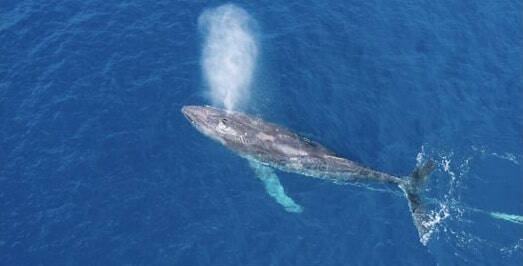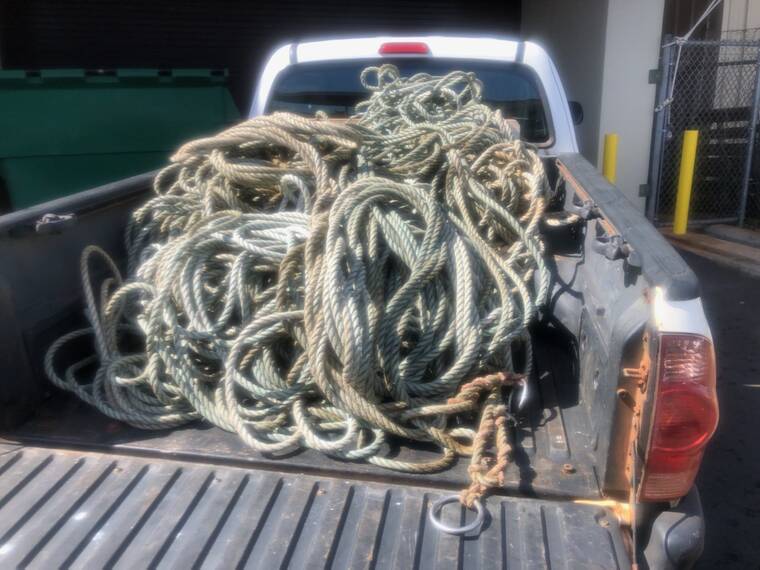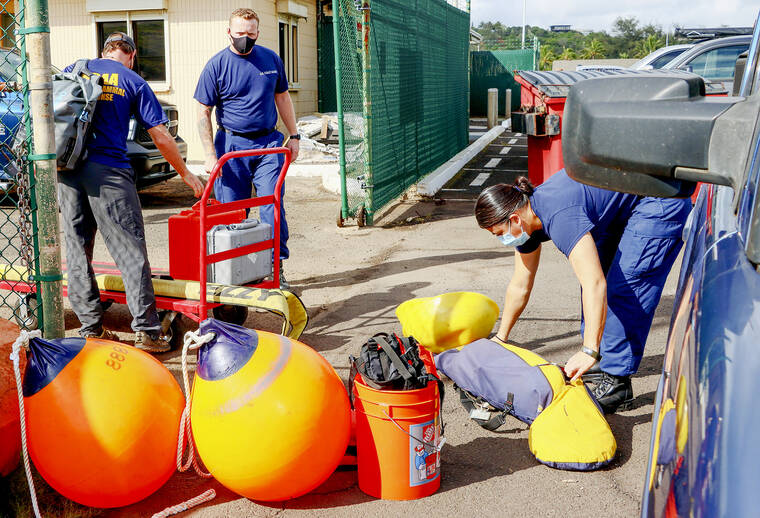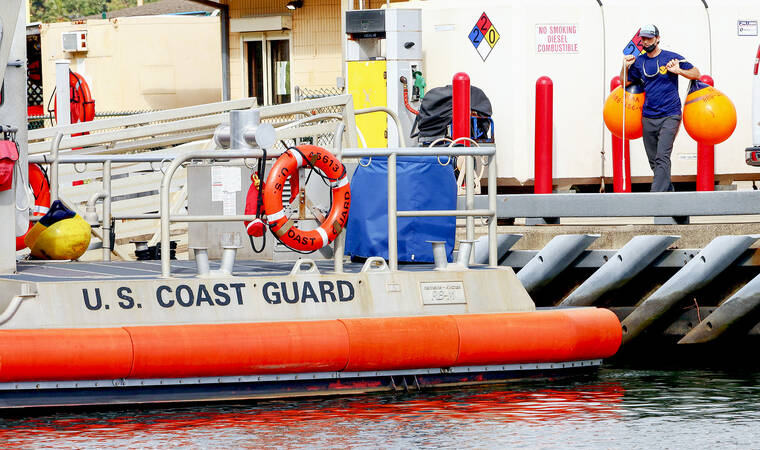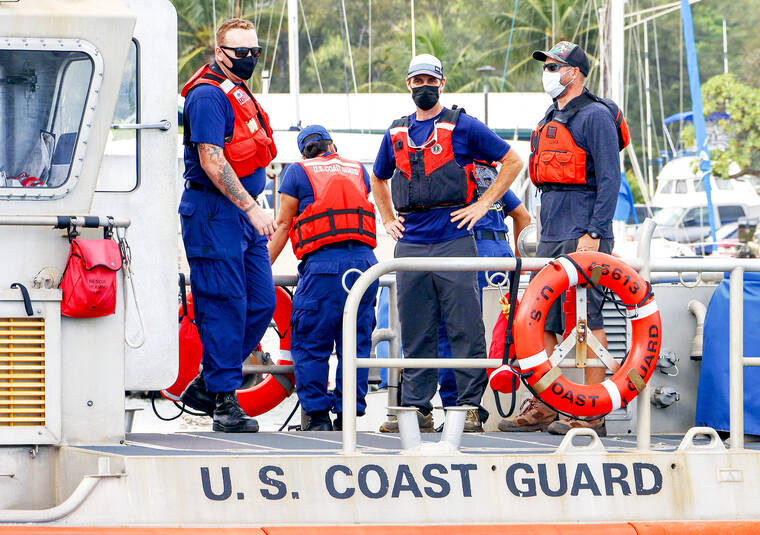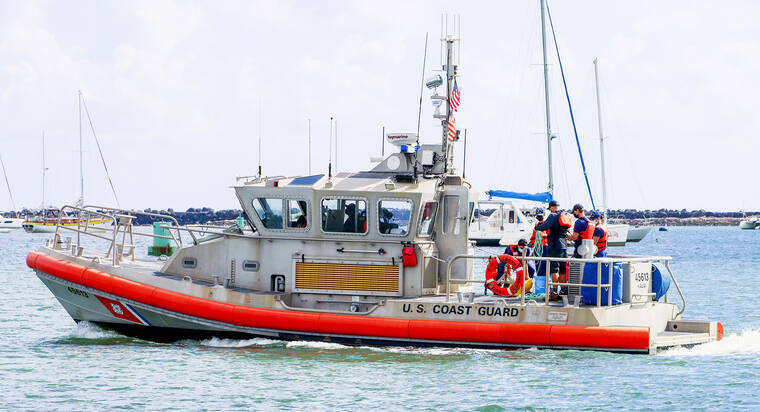PO‘IPU — Federal and state responders have removed 2,000 feet of heavy-gauge line from an adult humpback whale first sighted off Brennecke’s Beach last Sunday.
But the massive marine mammal was still entangled, according to National Oceanic and Atmospheric Administration officials, when it outran a team of trained NOAA and state Department of Land and Natural Resources responders on Monday.
Koloa resident Graham Talaber discovered the whale while filming honu, or green sea turtles, from above with a drone-mounted camera at midday.
“I noticed the rope and a dark spot at the end of the rope,” he told The Garden Island. “I hovered there for 10 or 15 minutes before it finally surfaced. My worries were confirmed when I saw the humpback at the end of the big net.”
Talaber immediately called out for his father, instructing him to call NOAA.
Officials were on scene within 30 minutes, according to the awestruck Talaber, who said the whale surfaced approximately 100 yards from shore.
“It’s just right there, right in front of you, this massive, bus-size animal struggling for its life,” he recalled. “Hopefully, as technology moves forward, we can have a better grip on these things and help mitigate all the bad stuff going on in the ocean.”
The gear will be investigated to determine its identity and possible origin, according to NOAA, which described the whale as emaciated, light-colored and rough-skinned, with patches of rust-colored cymanid amphipods, or whale lice, indicative of a whale in distress.
Responders, who removed the majority of the gear trailing from the whale on Sunday, also attached a satellite telemetry buoy to the animal, which will self-release in approximately one week.
Wednesday morning, the mammal responder team learned the whale, through signals from its satellite telemetry buoy, had returned to Kaua‘i waters.
Working with the U.S. Coast Guard, the team launched another effort at cleaning off the remaining debris, but as of 3:30 p.m. was not able to sight the whale.
“We will continue our efforts as conditions permit,” NOAA officials said.
Early reporting is key
NOAA has released the following instructions, reprinted here in full, for members of the public who spot an entangled whale:
• Call — Call the statewide NOAA Marine Wildlife Hotline at 1-888-256-9840 to alert authorized responders. Those without cell phone service can call the U.S. Coast Guard on VHF Channel 16;
• Monitor — If a response is possible, authorities may ask that you watch the animal from a safe — and legal — distance. Follow the 100-yard or close-approach rule, which prohibits approaching humpback whales by any means (including with a drone) within 100 yards, and within 1,000 feet when operating an aircraft;
• Document — If possible, take photos and video of the animal and entanglement from a safe — and legal — distance;
• Wait — Rescue efforts should only be conducted by trained, authorized personnel. For your health and the whale’s, do not attempt to free a whale on your own. Disentangling a large whale is dangerous. Removing trailing lines and buoys may diminish the chances of freeing the animal of all gear, potentially leaving lethal wraps behind.
This article was updated to correct the number of the NOAA Marine Wildlife Hotline.
•••
Scott Yunker, reporter, can be reached at 245-0437 or syunker@thegardenisland.com.


